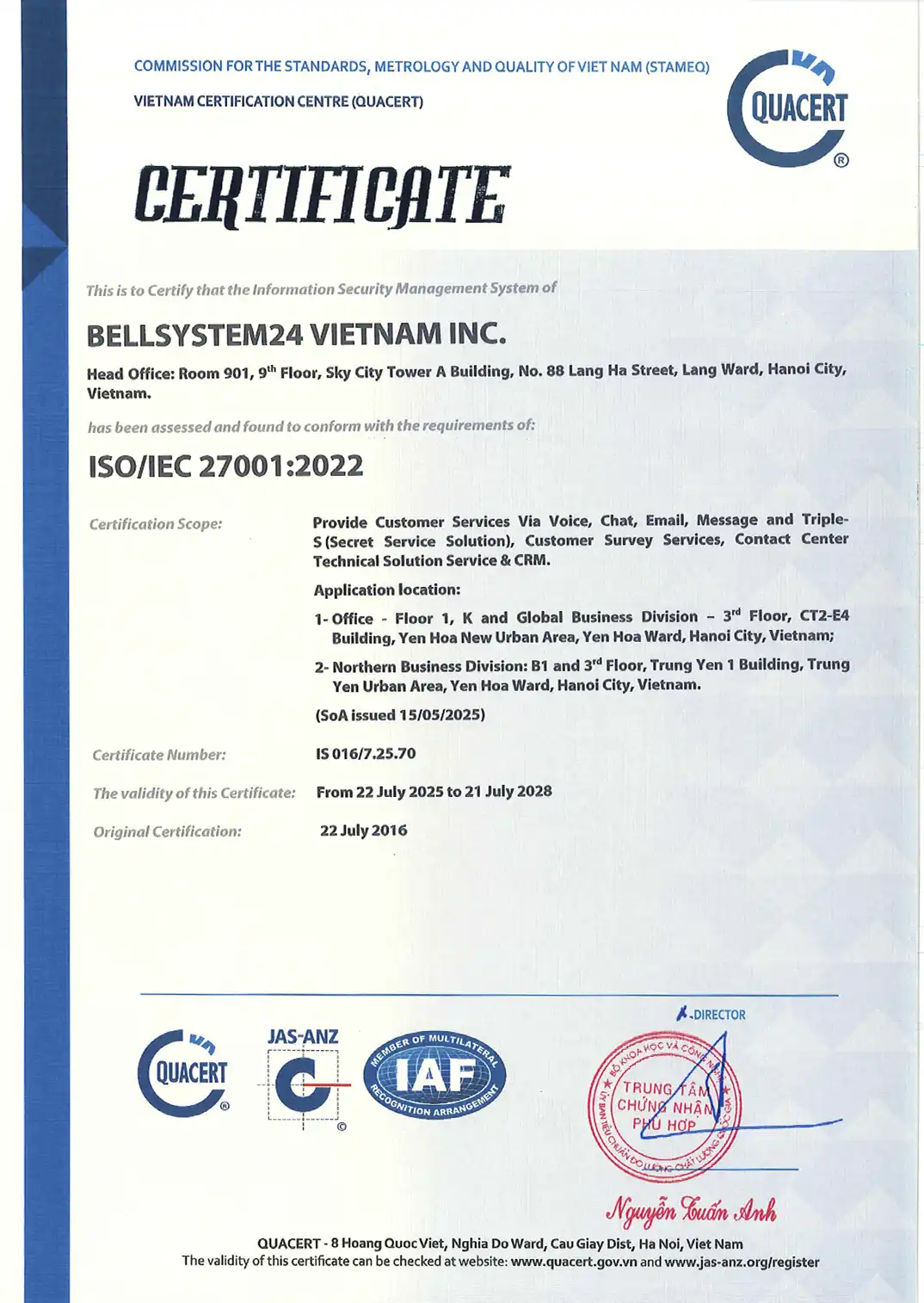AI Data Processing Service
The Foundation for Accurate and Effective AI Model Training
We help businesses build high-accuracy, consistent datasets ready for training AI models, from Computer Vision and NLP to Speech Recognition.
Image
Bounding Box: Drawing rectangular boxes to define an object’s location (object detection).
Polygon Annotation: Drawing complex polygons around irregular objects (instance segmentation).
Semantic Segmentation: Classifying every pixel in an image by category.
Keypoint Annotation: Marking key points (pose estimation, facial landmarks).
Image Classification: Assigning classification tags to an entire image.
3D Cuboid: Annotating 3D space for autonomous vehicles.
Text (NLP)
Named Entity Recognition (NER): Identifying and tagging names, organizations, locations, dates.
Sentiment Analysis: Labeling emotions (positive/negative/neutral).
Intent Classification: Determining user intent in chatbots.
Text Classification: Categorizing text by topic or category.
Relation Extraction: Annotating the relationships between entities.
POS Tagging: Part-of-Speech tagging (noun, verb, adjective…).
Video
Object Tracking: Tracking and annotating object movement across frames.
Action Recognition: Identifying and labeling actions and activities.
Scene Classification: Classifying and annotating scenes in a video.
Event Detection: Detecting and marking specific events (falls, collisions, unusual behavior).
Frame-by-frame Annotation: Detailed labeling of individual frames.
Temporal Segmentation: Dividing and annotating video into meaningful segments.
Activity Tracking: Tracking and labeling consecutive sequences of actions.
Medical Data
DICOM Image Annotation: Annotating X-ray, CT, and MRI images.
Lesion Detection: Detecting and marking lesions, tumors.
Organ Segmentation: Segmenting and labeling organs in medical images.
Cell Counting: Counting, classifying, and annotating cells.
Clinical Text NER: Extracting and annotating medical information from patient records.
Disease Classification: Classifying and labeling diseases from images/text.
3D Point Cloud
LiDAR Annotation: Annotating LiDAR data for autonomous vehicles.
3D Bounding Box: Drawing 3D boxes to define object location and size.
Semantic Segmentation: Classifying and labeling each point in the point cloud.
Object Tracking: Tracking and annotating objects in 3D space.
Sensor Fusion: Annotating combined data from cameras, LiDAR, and radar.
Multimodal
Image-Text Pairs: Annotating the relationship between images and descriptions.
Video-Caption: Creating and labeling subtitles for videos.
Audio-Visual: Synchronized annotation of audio and visual data.
Document Understanding: Extracting and annotating information from complex documents.
Cross-modal Retrieval: Annotating for multi-modal search.
Key highlights of AI training services
Save Time
Possess a large pool of AI trainers in a short time frame — accelerating project progress.
Diverse Sources and Formats
Collect data from hundreds of sources such as web scraping, APIs, documents, surveys, recordings, videos, IoT devices, etc., meeting all AI data project requirements.
No Setup Costs
No expenses for office space, infrastructure, recruitment, or staff training.
Guaranteed Performance
Each project is designed with specific SOPs and KPIs to ensure progress and target achievement.
Security and Safety
Operations comply with ISO 27001 information security standards. We commit to following data privacy regulations (GDPR, PDPA), intellectual property, and privacy rights. NDAs are signed with all stakeholders.
Integration with Other Systems
Provide consulting and integration with systems such as CRM, ERP, and Apps to enhance data management and reporting processes.
Key differences
- # Cost Optimization
- # Fast Deployment
- # Scalable & flexible operations
- # Multi-channel Data Collection
- # Information Security
- # Continuous Improvement
- # Multilingual Capability
AI Training Solutions for Industries
- Tech
- Finance, Banking
- Medical
- Travel
- Aviation
- Public Administration
- Logistics
- Manufacturing
- Education
- Ecommerce
FAQs
What is Data Annotation and Labeling, and why is it important for AI?
Data Annotation is the human-led process of adding metadata, labels, tags, or descriptive information to raw data to help AI models learn to recognize, classify, or predict.
Difference between Labeling and Annotation:
Labeling: Adding simple classification tags. Example: Image → “cat” or “dog”.
Annotation: Adding more detailed, complex information. Example: Drawing a bounding box around the cat, marking the position of its ears, eyes, and nose.
Importance:
Supervised Learning accounts for 80% of practical AI applications and requires annotated data.
Annotation Quality = AI Model Quality. If annotations are wrong, the AI will learn incorrectly.
Reduce Bias: Proper annotation helps prevent AI from discriminating.
Cost Savings: Correct annotation from the start avoids costly model retraining later.
Data annotation is essentially “teaching AI” to understand the world as humans do.
What types of data can BSV annotate?
Almost every type, including:
Images & Video: Object detection, segmentation, motion tracking.
Text (NLP): Sentiment analysis, entity recognition (NER), chatbot evaluation.
Audio: Transcription, speaker identification.
3D (LiDAR) and Medical (X-ray, MRI) data.
What is BSV's process?
We use an 8-step process focused on:
Preparation: Analyzing requirements, creating highly detailed guidelines, and training the team.
Execution: Beginning the annotation process.
Quality Assurance (QA): Applying a 3-layer QA system (self-check, peer review, and manager random audits).
Improvement: Continuous feedback loops to ensure consistent understanding.
Delivery: Final checks and delivering the data in the required format.
What measures does BSV take to ensure data security?
We understand that AI data security is of utmost importance. BSV is fully committed to protecting all client information through the following measures:
Certified information security standards: Operations comply with ISO/IEC 27001:2022.
Non-disclosure agreements (NDAs): NDAs are signed with clients and all team members involved in each project.
Secure network infrastructure: Access control, firewalls, and secure private networks (VPN).
Strict access control: Only authorized personnel can access data, with strict supervision and traceability.
Protected working environment: Monitored 24/7, no external storage devices (USBs, phones) allowed.
Can BSV scale up to handle large projects?
Absolutely. With more than 4,000 trained staff and flexible management systems, we can rapidly scale up to meet large-volume data projects in multiple languages and domains.
Our workforce and infrastructure allow us to maintain both speed and quality assurance across all projects.
Which languages can be supported?
Multilingual support. We have personnel currently working on projects using English, Japanese, Chinese, Korean, Thai, Russian, French, Italian, and other languages.
How is the service charged?
We offer flexible pricing models to suit the budget and requirements of each project:
Per Data Point
Per Hour
Per Unit / Task
Fixed Price (Per Project)



